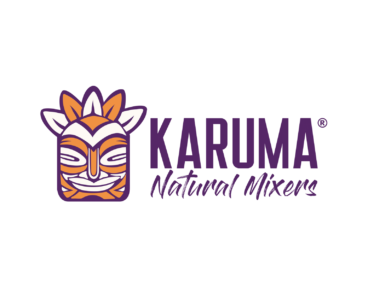Ever stumbled on an NFT marketplace that just felt clunky, sluggish, or downright confusing? Yeah, me too. Wow! The Solana ecosystem, with its SPL tokens and staking rewards, has been buzzing, but honestly, the ease of access still trips a lot of folks up. So I was thinking about what really makes or breaks the user experience when diving into decentralized finance (DeFi) and NFTs on Solana. It’s not just about the tech under the hood—though the blockchain’s speed is nuts—it’s how you actually interact with it.
At first glance, SPL tokens might seem like just another crypto jargon, but really, they’re the backbone of Solana’s token economy. They’re basically Solana’s version of Ethereum’s ERC-20 tokens but way faster and cheaper. Something felt off about how people often overlook staking rewards tied to these tokens. It’s not just about holding; it’s about actively earning while you hold. Hmm…
On one hand, it’s thrilling to see how staking can generate passive income, but on the other, many users get overwhelmed trying to figure out where and how to stake effectively, especially without a seamless wallet interface. Actually, wait—let me rephrase that—without a wallet that’s both simple and powerful enough to handle SPL tokens, staking, and NFTs in one place, the whole experience can quickly become a headache.
Here’s the thing. I’ve tried various wallets, and phantom stands out, not just because it supports all these features but because it’s designed with the user’s flow in mind. It’s not perfect, but it nails the balance between functionality and simplicity, which is pretty rare in crypto wallets.
Really?
Let’s break it down. SPL tokens are crucial for anyone serious about the Solana ecosystem. They represent everything from governance tokens to utility tokens, and they’re what you’ll be staking to earn rewards. Staking itself is a bit like putting your money in a high-yield savings account, except the “bank” is decentralized and run by validators securing the network.
Initially, I thought staking was just a way to lock up tokens, but then I realized it’s also a vote of confidence in the network’s health. The more you stake, the more you’re literally betting on Solana’s future. This dual role makes staking feel much more engaging than just passive holding. Yet, the process can be daunting—especially if your wallet doesn’t present clear options or real-time rewards info.
And NFTs? Check this out—Solana’s NFT marketplaces have exploded recently. They’re way cheaper and faster than Ethereum’s, which is a breath of fresh air. But here’s what bugs me about most NFT marketplaces: they often forget that buyers want smooth, quick transactions without gas fee nightmares or complicated wallet setups.
Phantom’s NFT marketplace integration is a breath of fresh air because it allows you to browse, buy, and sell NFTs right from the wallet interface without jumping through hoops. Plus, you get to see your staking rewards and token balances alongside your NFTs, which feels like your whole DeFi and NFT life condensed in one spot.
On a personal note, I remember when I first tried to stake an SPL token using a random wallet—ugh, nightmare. The interface was cluttered, and I wasn’t sure if I was actually earning rewards or just locking my tokens away. With phantom, it’s more intuitive. You get notifications, you can track your rewards easily, and the whole thing feels very polished, even if you’re a newbie.

That said, I’m not 100% sold on everything. For example, some advanced staking options and NFT features still require digging into external platforms, and phantom kinda leaves you hanging there. But for most users, it’s a solid launchpad. (Oh, and by the way, if you’re diving into Solana, phantom’s fast setup saves you from a ton of headaches.)
Another subtle but important point is transaction speed. Solana’s network is blazing fast, but your wallet’s UX can bottleneck the whole experience. Phantom syncs with the network so smoothly that you hardly notice any lag, which makes staking and NFT trading feel more like normal app usage than dealing with blockchain’s usual friction.
Something else to keep in mind: the community around phantom is pretty active, which means bug fixes and new features roll out regularly. This ongoing support is crucial because the crypto space moves fast, and wallets need to keep up without breaking your flow. I’ve seen wallets with great features but terrible maintenance, and that’s a no-go.
On the topic of staking rewards, it’s fascinating how they incentivize long-term engagement. Instead of just flipping tokens for quick gains, staking encourages users to contribute to network security, which benefits everyone. But reward rates can fluctuate, and that’s where having transparent info inside your wallet is very very important. Phantom does a decent job showing estimated rewards, though I wish it was a bit more granular.
So, what’s the takeaway? If you’re in the Solana ecosystem, juggling SPL tokens, staking, and NFTs, your choice of wallet can majorly impact your experience. Phantom isn’t perfect, but it’s probably the best blend of speed, user-friendliness, and feature set available right now.
Seriously, if you want to jump in, check out phantom. It might just save you from some unnecessary headaches while exploring DeFi and NFTs on Solana.
Common Questions About SPL Tokens, Staking, and Phantom Wallet
What exactly are SPL tokens?
SPL tokens are Solana’s native token standard, kind of like Ethereum’s ERC-20 tokens. They power everything from DeFi projects to NFTs within the Solana network.
How do staking rewards work on Solana?
You lock up your SPL tokens with validators who secure the network, and in return, you earn rewards—basically interest paid in tokens. Rates can vary depending on network conditions and validator performance.
Is Phantom wallet safe for managing NFTs and staking?
Phantom is considered secure and user-friendly, supporting both NFTs and staking directly in the wallet interface. However, always follow best security practices like safeguarding your seed phrase.












